The Mercedes ‘Gullwing’ 300SL broke new ground for the men from Stuttgart, bringing startling styling and racetrack performance to those with deep pockets.
But it was its little brother, the 190SL – similar styling, reduced performance and cost – that paved the way for the W113 ‘Pagoda’, one of the most accomplished sports tourers ever made.
We look back at a German masterpiece.
The 300SL, launched to an astonished motoring public in 1954, transformed Mercedes’ reputation as a builder of somewhat staid luxury saloons.

Influential car importer Max Hoffman persuaded management to produce a road-going version of the Le Mans-winning W194 race car, but it was costly to produce and prohibitively priced.
Mercedes wanted to cash in on its new-found status as a performance car maker, as well as its racing pedigree, so introduced the smaller 190SL, imitating the bigger car’s styling but swapping a 3-litre straight six for a 1.9-litre four pot.

It had the desired effect – the new car was a sales success. Still expensive, still exclusive, but within the reach of far more motorists.
The 190’s performance, however, left something to be desired, and Mercedes knew they needed to come up with an improvement on its 100bhp for the next SL.
Development of the Pagoda
Almost as soon as the 190 was introduced in 1955, Mercedes was working on an upgrade that could offer more sporting performance but sit below the supercar speed of the 300SL.
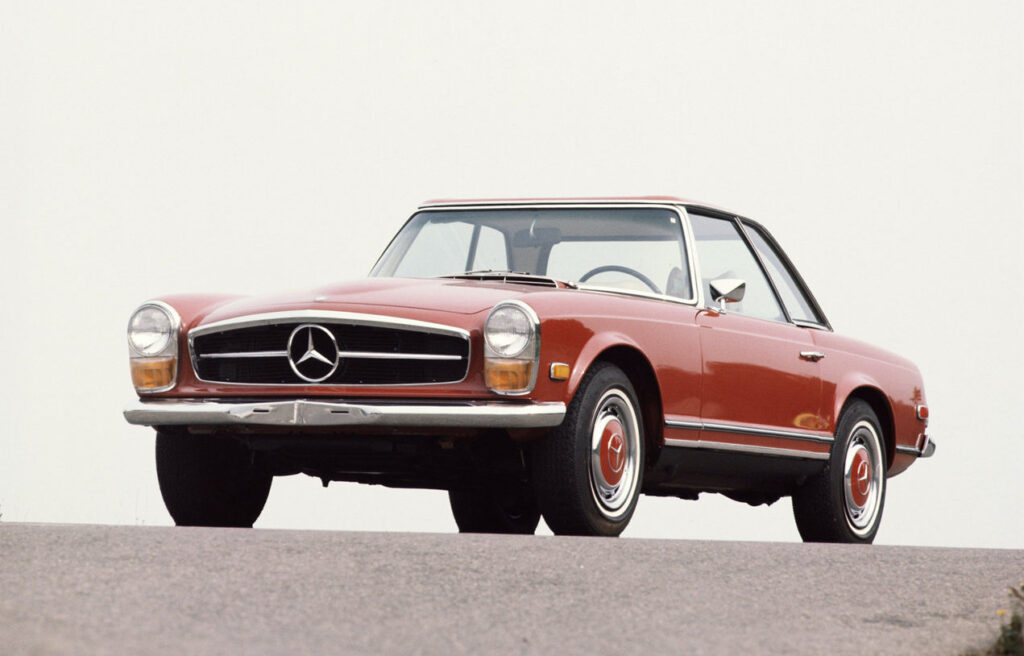
Work began on a new platform, the W127, utilising a fuel-injected 2.2-litre inline-six, but the planned production was beset by technical difficulties.
Meanwhile, the new “fintail” W111 platform was taking shape, and in 1960 Mercedes’ technical director Fritz Nallinger opted to begin a completely new SL design based on a shortened version of the new chassis.
Using technology from the luxury version, W112 – hence W113 – the 230SL was born, with an improved 2.3-litre engine producing a claimed 150bhp.
Debuting at the Geneva Motor Show in 1963, the car was quickly dubbed the ‘Pagoda’ thanks to its unusual, slightly concave hard top – mimicking the roof shape of far eastern temples.
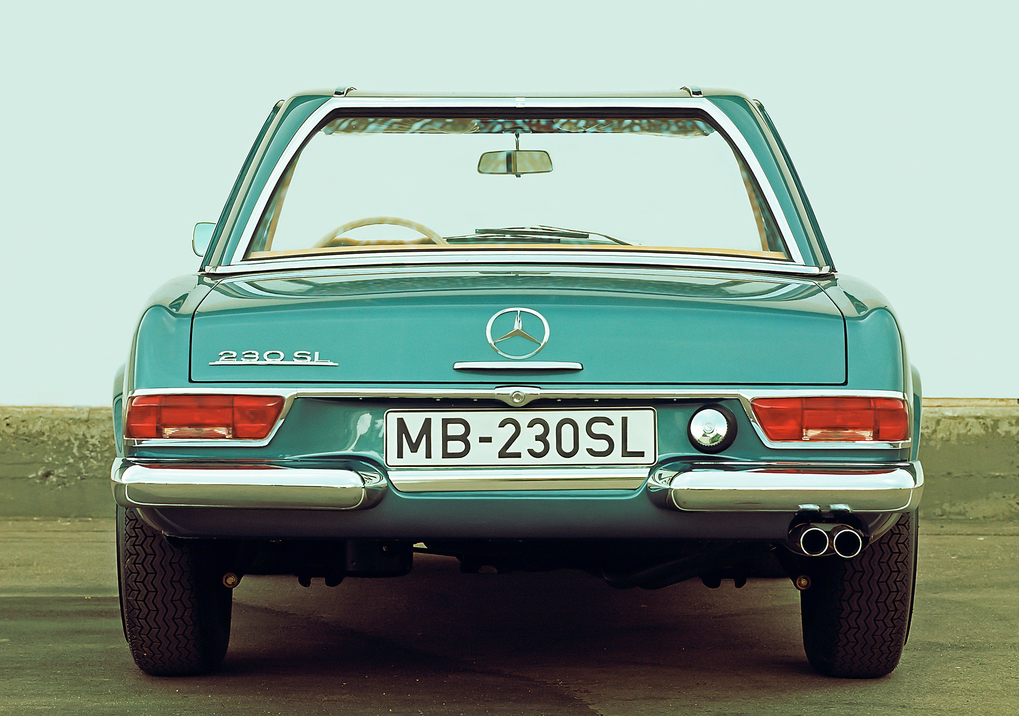
At the time, Nallinger declared it “a very safe and fast sports car with high performance, which despite its sports characteristics, provides a very high degree of traveling comfort”.
In terms of safety, Mercedes said it was the “first sports car worldwide with a safety body consisting of a rigid passenger cell and front and rear crumple zones”.
At a stroke, the new car replaced both the 300SL and the 190SL, and was well-received by the motoring press.
Like our illustration of the Mercedes-Benz ‘Pagoda’: style, safety, comfort at the beginning of the article?
Download a free high-quality poster version here.
Mercedes 230SL reception
The new Merc wasn’t supposed to be a direct replacement for the earth-shattering performance of the 300SL, more of an upgrade on the 190, which Autocar acknowledged in its test in September 1964.
This was a sports tourer, not an out-and-out sports car.
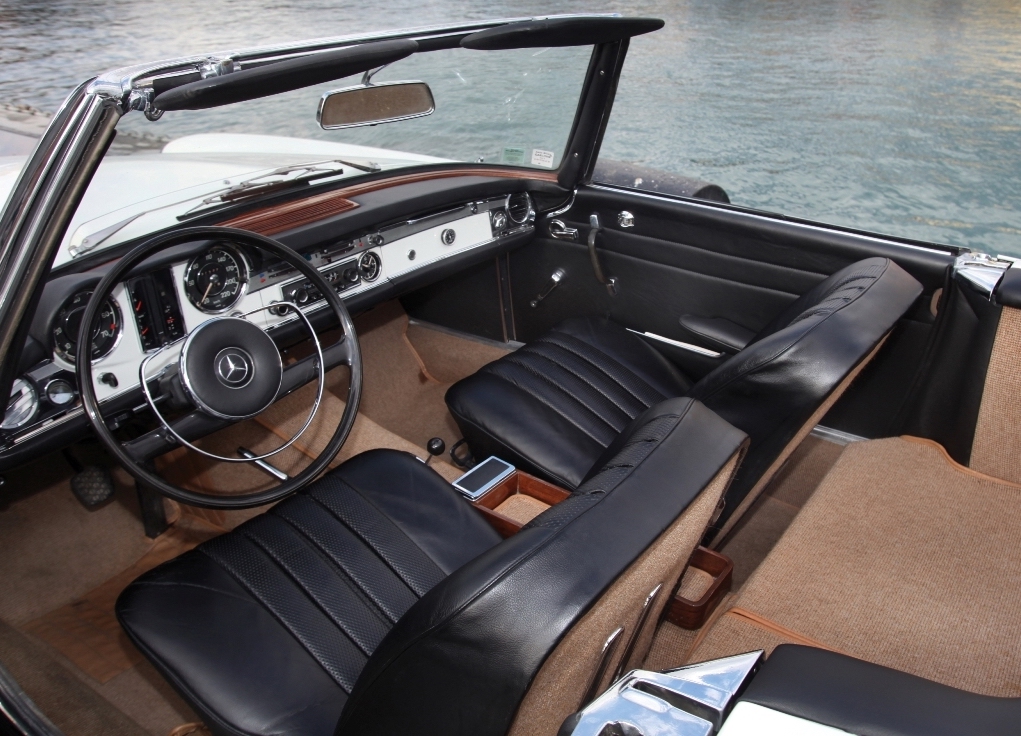
“Recollections of the startling 300SL – in its day the world’s fastest production car – would give a misleading introduction to the latest Mercedes sports car, the 230SL,” it wrote.
“In place of colossal maximum speed and breath-taking acceleration the magic of this car lies instead in its refinement, comfort and superb road behaviour.”
The 230SL gained 15mph on performance over the 190, taking top speed to 121mph, but a lack of low-down torque meant the engine had to be kept turning briskly to make the most of the performance.
“The harder the Mercedes is pushed along, the more the car can be enjoyed in its true element as a grand tourer,” said Autocar testers, with the car holding an “arrow-straight course” on motorways.
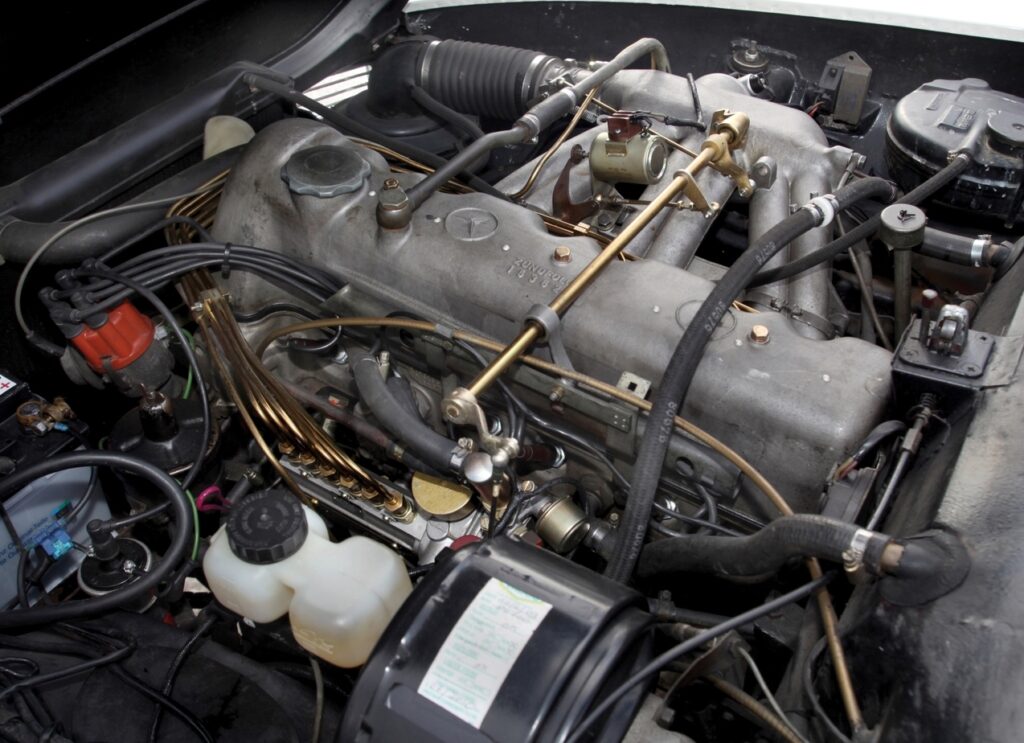
“Sitting squat on the road with its wide track and low profile, it seems to give not an inch even when gale-force winds are lashing the trees about. Corners can be taken at almost prodigious speeds with extraordinary stability, ease of mind and control.”
With its outstanding build quality and impeccable road manners, the 230SL was in a class of its own as a long-distance sports tourer, and came in three guises: fixed head coupe, convertible, and with a removable hard top.
Sporting Motorist magazine summed it up nicely: “It’s not a saloon car, not a sports car, but a bit of each.
“It is hard to describe the 230SL properly as it breaks entirely new ground in concept and would be difficult to emulate, but is surely intended as a grand touring car which offers two people every possible comfort over very long distances.
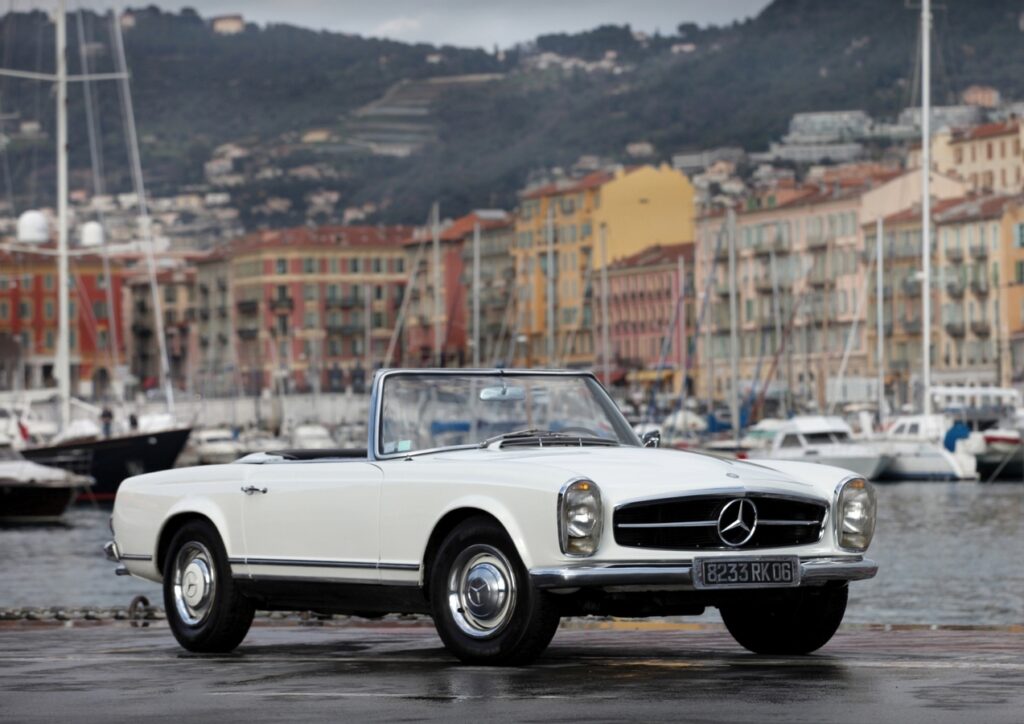
“(It) combines ruggedness and lightness of control, outstanding roadholding with softness of ride, performance without drama and good looks with excellent visibility.”
Bill Boddy, writing in MotorSport magazine, waxed lyrical about the quality of the interior and the “impeccable finish and comprehensive specification, as much as the performance, that makes this a supreme sporting car for the discerning”.
At launch, the car was offered with 4-speed automatic or manual transmission, but in 1966 a now rare and highly desirable 5-speed ZF box became an optional extra.
Enter the 250SL
The 250SL went some way to addressing the torque complaints, with its 2496cc M129.II engine raising output from 145lb ft to 159lb ft, while power remained a claimed 150bhp.
Launched in Geneva in 1967, it was only ever intended to be a stopgap model, with production ending in January 1968.
As such, it’s the most rare of the W113s, with just 5,196 produced, more than a third of which found their way to the USA.
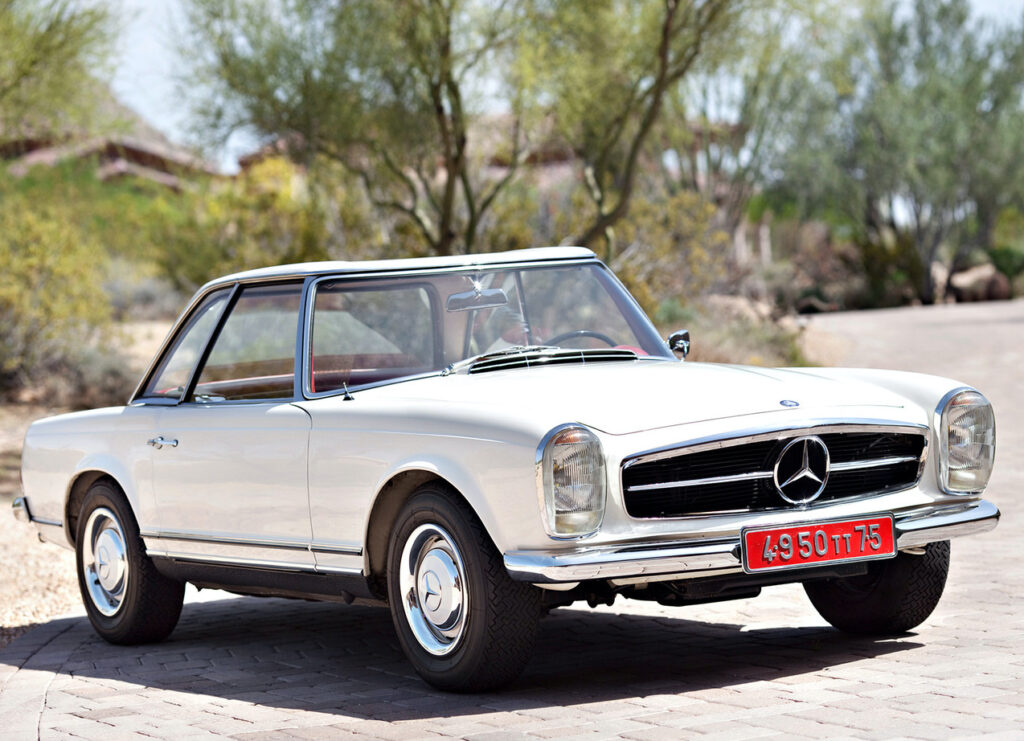
Apart from the new engine, little else changed at launch, but the cars came with disc brakes all round, a larger fuel tank, and an optional limited slip differential.
For the first time, the SL came in as a 2+2 in the form of the ‘California Coupe’, which came only with a removable hard top – the space for the soft top being taken over by a small bench rear seat.
Adrian Flux Classic Car Insurance
A number of mid-term modifications came as a result of stricter safety and emissions rules in the US, including a collapsible steering wheel with a padded hub, softer and rounder dash top padding, rubber heater levers and minor trim changes to the mirrors.
In the US only, the cars gained side reflectors on the bumpers, three-point seat belts and emission control equipment.
The ultimate: 280SL Pagoda
After just over a year, the 250SL gave way to the ultimate version of the car, the 168bhp 280SL.
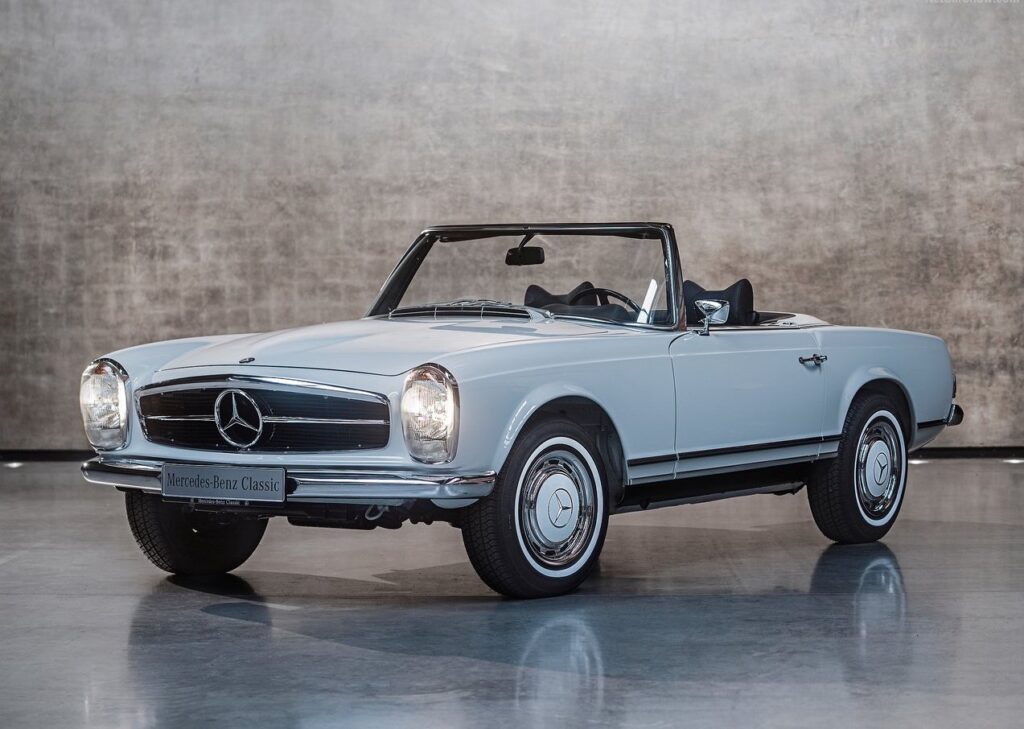
The main change over its predecessor was the 2778cc M130 engine, the final evolution of the venerable SOHC M180 inline-six.
Performance was now distinctly brisk, 60mph coming up in just 8.6 seconds, to go with all the other benefits of a largely unchanged car.
Arguably the world’s best two-seater touring car had just got even better, especially with torque now up to a maximum of 180lb ft.
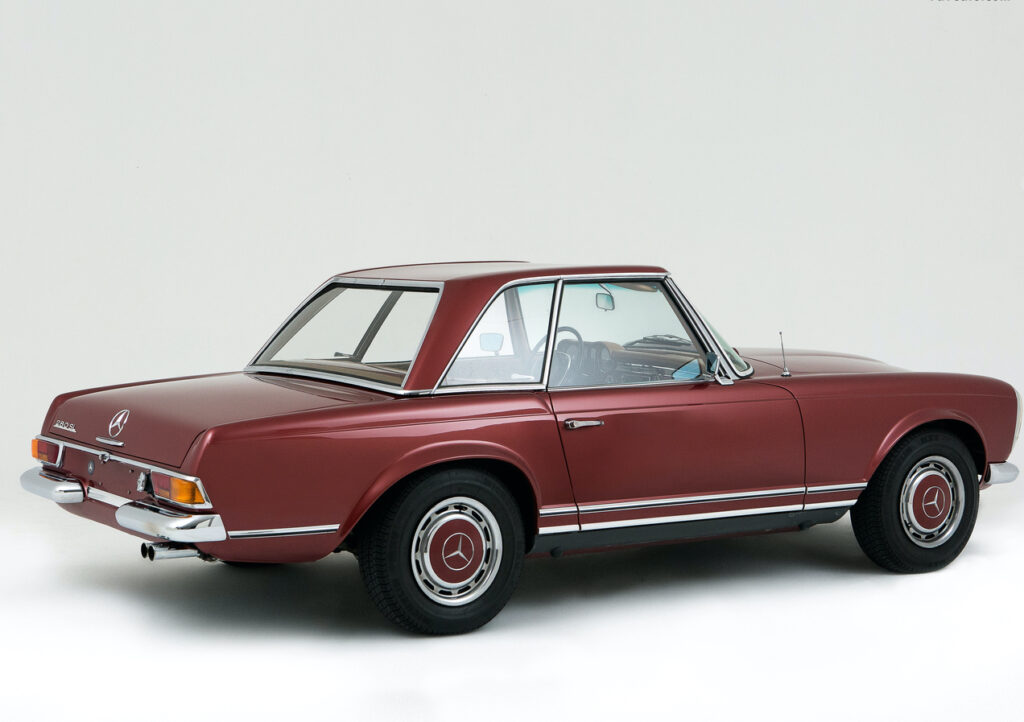
Most of the cars sold in America, which was about half, came in automatic guise with optional air conditioning.
Of the 48,912 W113s sold worldwide nearly half were 280SLs, and these cars are the most sought after today – as reflected in prices that start at about £50,000 but can reach up to £200,000.
It’s easy to see why. Apart from the investment potential, the 280SL is one of the few 1960s cars that wouldn’t feel out of place on today’s roads.
With superb build quality, more than adequate pace and extreme comfort, and plenty of luggage space, a trip to the south of France would still be a joy 50 years after the last of the cars left the factory.
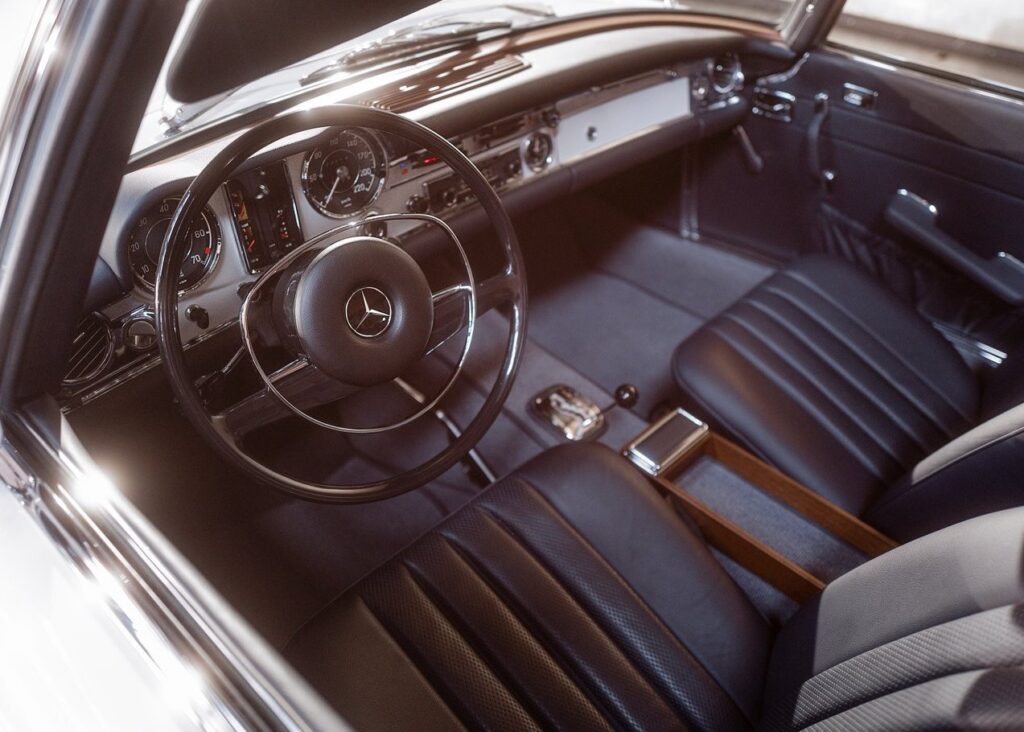
None other than Stirling Moss wrote in a letter to Mercedes racing director Aldred Neubauer: “In all the years I have been driving, I cannot remember ever driving a car that I would have liked to own more (except for racing cars!)”.
Special editions
Somewhat surprisingly today, when it was launched the ‘Pagoda’ styling by designer Paul Bracq didn’t win rave reviews.
Most contemporary road tests focus on the car’s technical brilliance rather than its looks, which are considered stunning 50 years on.
In 1963, Pininfarina approached Mercedes to design its own custom version, with young stylist Tom Tjaarda tasked with turning the roadster into a rakish fixed head coupe.
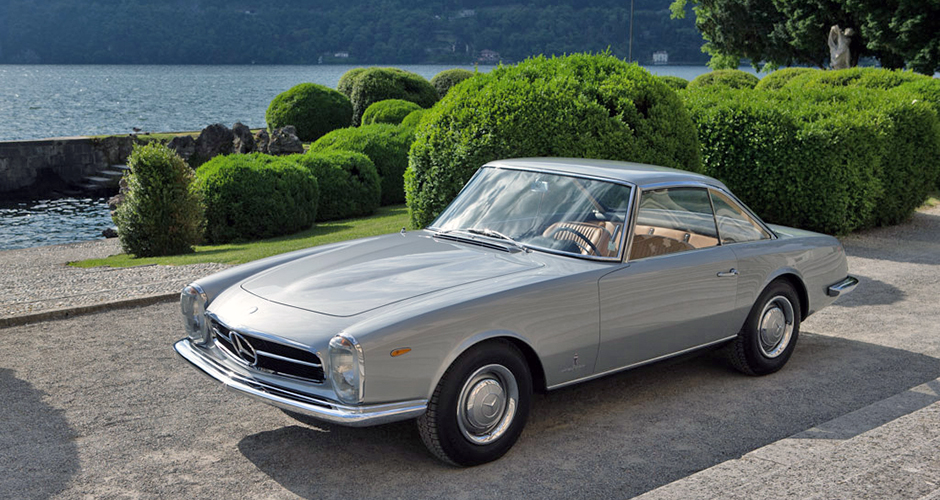
Tjaarda dispensed with the Pagoda roof, raked the grille more sharply, sculpted the wings and made the sides more bulbous and wider.
The bonnet was shortened and narrowed, while the sloping rear end aped the Tjaarda-designed Ferrari 330 GT 2+2 while retaining Mercedes’ distinctive look.
Despite a pleasing outcome, the car remained a one-off.
Another one-off was the 1966 230 SLX shooting brake from Turin coachbuilder Pietro Frua, which gave the car a much larger grille more in keeping with Mercedes big saloons, and an estate body.
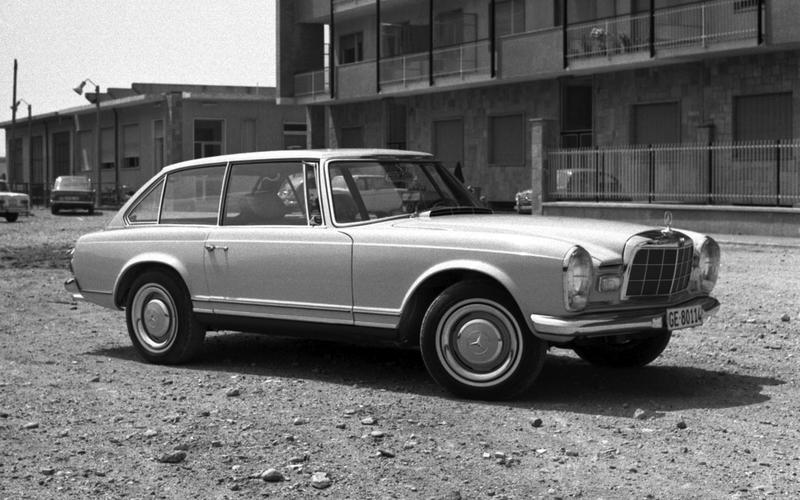
Meanwhile, Mercedes chief engineer Rudolf Uhlenhaut put a 6,332cc, 247bhp V8 in a 250 SL to push the envelope of performance, but the engine proved too heavy and the car was destroyed.
The final engine experiment was to fit a 203bhp Wankel rotary engine into a 280 SL in 1968, but this project was also abandoned.






